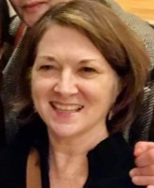Self-Care and Stress Reduction: Adopting a Yoga Mindset in Clinical Practice
Barbara Morrison, PA-C
April 13, 2022
 April is Stress Awareness Month. Based on over two decades of clinical practice, I would like to offer some thoughts on why there needs to be a Stress Awareness Month and how we got here.
April is Stress Awareness Month. Based on over two decades of clinical practice, I would like to offer some thoughts on why there needs to be a Stress Awareness Month and how we got here.
By day I practice internal medicine, managing the acute and chronic problems of older adults. And by evening I teach yoga and meditation. The balance of these two activities allows me to feel effective in my medical practice and has been key to my ability to avoid burning out entirely.
Since 2019, I have served on the AAPA Task Force on Burnout, and we have drafted numerous documents, produced webinars for CME, and created a blueprint for stakeholders to implement changes as a strategy to confront this urgent issue for PAs. My passion for this topic stems from having internalized the cumulative effects of caring for those in pain, sorrow, or joy, while also being entrusted with their stories. Like many PAs, however, I have also felt the ever-accelerating pace of our work, the growing complexity of modern medicine, and the constant demands of immediate access by patients and institutions, forcing me to ask myself how long I can possibly continue in my role.
American workers, overall, have been found to have high rates of burnout, and that rate has worsened since the pandemic. Among healthcare workers, first responders, and teachers, the rates of self-reported burnout are even higher.[i] For PAs it is no wonder this is the case, given the higher demand, staffing challenges, and diminished public trust in our training. As a result of close contact with those who are ill, suffering, or dying, healthcare workers are more prone to burnout, also known as moral injury, than those in many other careers. Burnout has been linked to higher rates of medical errors, poor staff retention, and increased rates of substance abuse and mental health problems among providers. We have to do better, institutionally and individually.
When my children were small and my spouse still in grad school, while managing the usual financial and time burdens, I took a random yoga class at our local gym. One hour to myself, moving my body in ways that I could feel tension pouring out of me, soon led to a regular weekly practice. My temper was improved, my patience more lasting, and I just felt better overall with less nagging neck pain.
Yoga, I came to understand, involves both physical and mental training, bringing significant improvement in flexibility, decrease in joint pain, decreased anxiety and depression, and, according to many studies, better sleep. Cardiovascular effects vary based on the type of practice and length of sessions, but yoga can easily compete with vigorous exercise as a path to better fitness and increased mental health.[ii] Reduction in conditions like carpal tunnel have been noted and improved flexibility well documented. Meditation and slower forms of yoga have been shown to reduce anxiety and depression.[iii]
The practices of yoga have helped me create balance in life, and to develop skills to navigate the daily pressures we face. It has reminded me that both medicine and yoga, or any contemplative habit, are practices, whether science or art. The benefits of a daily yoga practice keep us present and centered, right where we are, preventing us from tuning out. It can help us confront issues we have stubbornly ignored or avoided. Principles and practices dating back 5,000 years continue to serve us, training our minds to focus on a single point and tolerate distraction. We learn to slow down and improve our own self-awareness. Yoga improves strength, flexibility, resilience – it helps us breathe before reacting. It can help us see the larger picture and resist the demands and expectations that have us constantly clicking boxes and meeting benchmarks.
Perhaps what is most rewarding about teaching yoga and meditation is when students become invested in their own well-being. They begin to see the cause and effect of choices they’ve made and connect the dots for themselves. To take the time to teach the body to fully relax, to quiet the mind, to experience stillness, is to allow the body to heal itself. In that space we can process all we give to others and reconnect with purpose. We can listen to the inner voice and listen for the next step.
Our training as PAs is nothing if not collaborative, and yoga has presented me a parallel track to my practice as a PA, working in tandem to achieve many of the same goals. We have a tremendous responsibility and privilege in caring for patients. From the general physical exam to managing the critically ill, each day we walk into people’s lives, often at a time of crisis, and attempt to offer some level of comfort and reassurance that their conditions will get better. What if we could allow our training to demonstrate the value of this more collaborative model? Bringing yoga into my medical practice and teaching it to colleagues has changed me permanently. We learn to use our experience, training, and instincts to know how to respond from one interaction to the next. We breathe slowly and deeply while patients describe symptoms of appendicitis, stroke, depression. We breathe to hear between their words for what is not said. On the yoga mat we move with grace, releasing long-held tensions, letting go of the thousands of times we had to give bad news.
Bringing a collaborative model (yoga mindset) into our practices would ultimately save costs and be better for patients, but is it also the key to avoiding burnout? Is burnout the result of an unsustainable system – or can we leverage our own increased mental health and well-being to strategize better ways of coping and maintaining professional boundaries that should not be crossed? We are overworked, understaffed, and struggling to meet the needs of the ever more demanding healthcare consumer. In sharing the workload, we all breathe a bit easier, and we find some lightness in our interactions, energy for new projects and initiatives.
And if you find our current environment is unfavorable to a healthy workflow, let this current crisis be your calling to step up and work for the change we all need. Be creative and seek out best practices for change. What are our physician, PA, and NP colleagues in other systems or at state local or national level academies doing to address healthcare provider burnout?
Finally, remember self-care. Find space away from the things in life that raise your stress levels. If yoga is not your area of interest, take a walk, garden, play an instrument, engage in the activities that bring you joy. Take your PTO no matter what. And with CME, use those hours to meet and learn with like-minded colleagues. Use the communications skills we cultivate as PAs to collaborate, build relationships, and improve what we have. We have the skills, the drive, and the passion to discern what fires us up and what we want to change. It is our time at the table – so will you speak?
References
[i] https://www.apa.org/monitor/2022/01/special-burnout-stress
[ii] https://www.uptodate.com/contents/overview-of-yoga/abstract/38,40#:~:text=PubMed,1989%3B44(5)%3AM147.%C2%A
[iii] https://www.uptodate.com/contents/unipolar-major-depression-treatment-with-mindfulness-based-cognitive-therapy?search=yoga%20benefit%20&topicRef=87028&source=related_link#:~:text=van%20Aalderen%20JR%2C%20Donders%20AR%2C%20Giommi%20F%2C%20et%20al.%20The%20efficacy%20of%20mindfulness%2Dbased%20cognitive%20therapy%20in%20recurrent%20depressed%20patients%20with%20and%20without%20a%20current%20depressive%20episode%3A%20a%20randomized%20controlled%20trial.%20Psychol%20Med%202012%3B%2042%3A989
Resources
This YouTube site is a place where I combine decades of what I learned practicing medicine with training as a yoga teacher to address common ailments. Teaching meditation, poses, and mindfulness is my passion and I love the chance to get on the front end of the problem We know how to treat many chronic illnesses, but what if we could be proactive and reduce complications? What if using these practices could reduce anxiety and blood pressure and create more ease in your day? What if we combined the best of both approaches?
Guided meditations: https://anchor.fm/s/45d17898/podcast/rss
Yoga videos: Barbara Morrison – YouTube

